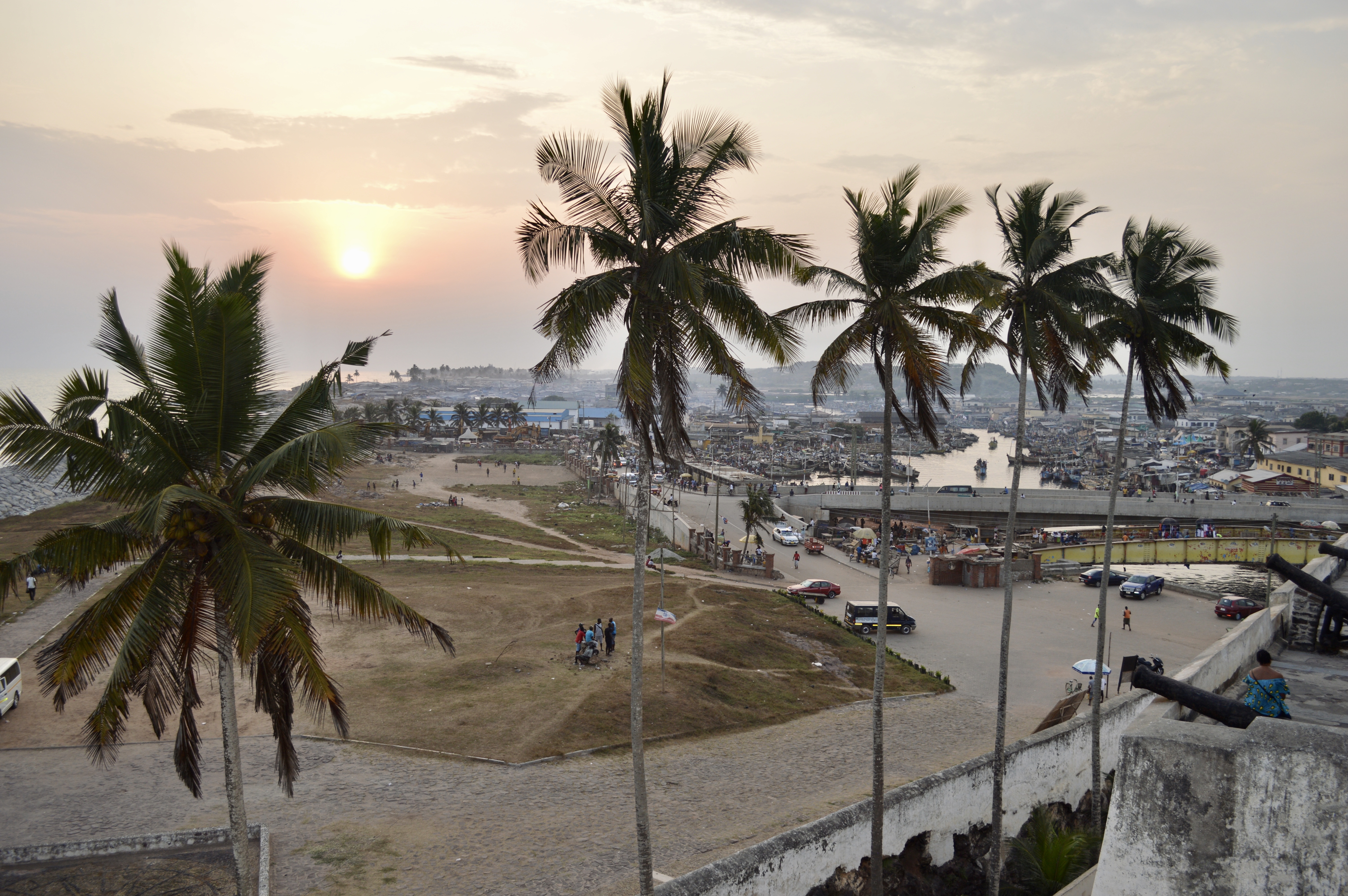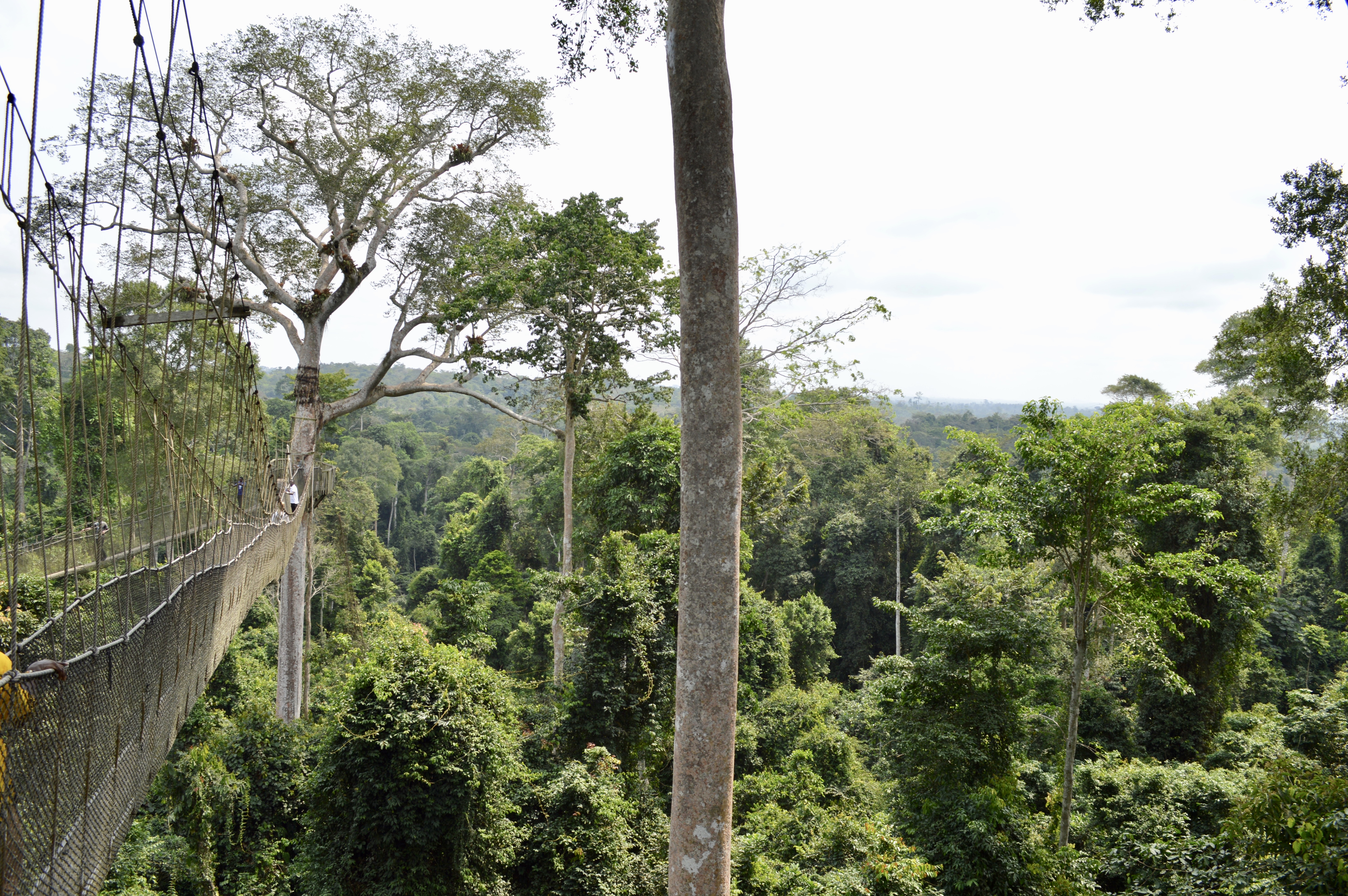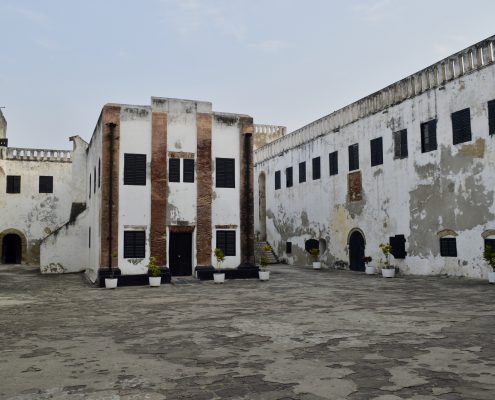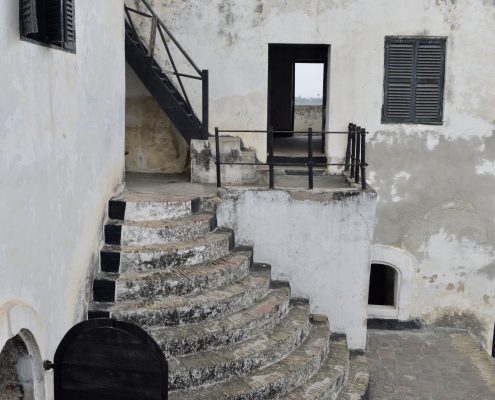By Ashley Young
After two weeks of living in Accra, learning about Ghanaian culture and society, and finally (finally!) adjusting our melanin cycles to the African sun, it was time to leave the Greater Accra Region and travel to the Central Region. The Central Region is situated on the coast, much like Accra, but due West of the University of Ghana by a few hours. The capital of the Central Region is Cape Coast, and near it is a town called Elmina. This is where we (the UCEAP students and staff) made our stay for the weekend.

Note: This trip was coordinated by our UC Study Center staff! I did not realize this when I chose to come to Ghana, but UCEAP includes many trips, meals, overnight stays, and excursions in the University of Ghana program! I’m not sure to what extent other programs or locations do this, but it is certainly worth looking into if you are considering studying abroad in Ghana or another country through UCEAP.
When we first arrived in Elmina, our staff took us to Elmina Slave Castle. The Elmina Slave Castle was built by the Portuguese in 1482 and was the first trading post built on the Gulf of Guinea. Currently, it is the oldest standing European building south of the Sahara. While the castle was originally established as a trade settlement, it evolved into one of the largest stops in what is now referred to as the Triangular Trade, in which Europeans brought finished goods to Africa, traded for human slaves which they brought to the New World, and then produced raw goods in the New World which they exported to Europe. Elmina castle belonged to the Portuguese from 1482 to 1637, the Dutch from 1637 to 1872 (the slave trade ended during this time period, in 1814), the British from 1872 to 1957, and finally, Ghana, from 1957 to present.
While the pictures I have posted of the castle may seem beautiful, it is anything but. The horrors that occurred within its walls and as part of the larger Trans-Atlantic slave trade are truly awful. While visiting the castle was not a pleasant experience, it served as an important part of the UCEAP University of Ghana study abroad program and helped us to understand the past and current marginalization and exploitation of Africa by other nations.
Though our first day in the Central Region was somber, the next day was packed with fun and exciting activities! First, we took a beautiful drive to the Kakum Rainforest Reserve, which is part of Kakum National Park. There, we did a short hike and a canopy walk, where we moved through the trees on a series of long, tall, suspended bridges! Some of my classmates would describe the experience as daunting and risky; others would describe it as beautiful and totally awesome! Personally, I think that it was a good dose of both of these things, and I would certainly recommend the experience to others.

After our rainforest adventure, we headed back to Elmina and the Coconut Grove Beach Resort, where we were staying. There, we rode horses, had lunch and dinner at the resort restaurant, and swam in both the seaside pool and the ocean itself. The following morning, a few of us got up early to watch the sun rise over the waves. For me, this was truly the highlight of our trip. The way that the light fingered the clouds, the beautiful and serene pink and orange hues, the shimmering reflection of the sun on the waves, and the sound of birds awakening in the trees – it was a wonderful experience, and a peaceful way to reflect on our time in Ghana thus far.
I hope you have enjoyed reading this post! The next post will be about another weekend trip coordinated by UCEAP to the Ashanti Region, so stay tuned!
Ekua
Complimentary Twi Lesson!: In every blog post from here on out, I will be sharing some words, phrases, or sentences that I have learned for conversational Twi! This post’s words are:
Maakye! (Good Morning!)
Maaha! (Good Afternoon!)
Maadwo! (Good Evening!)





